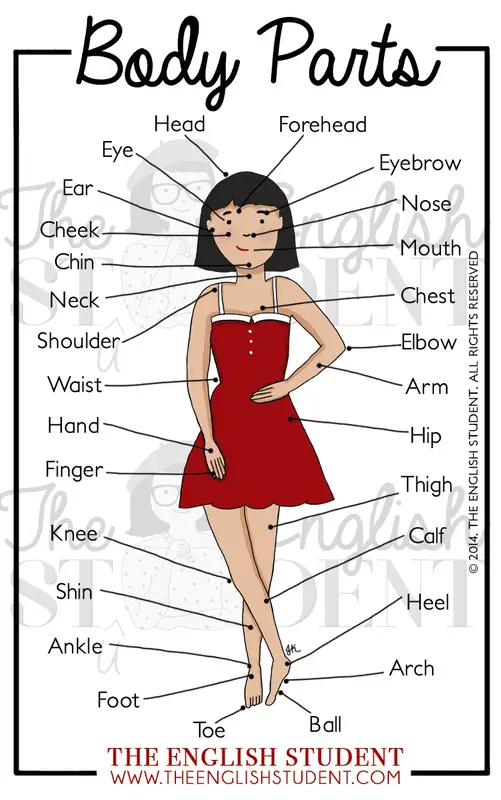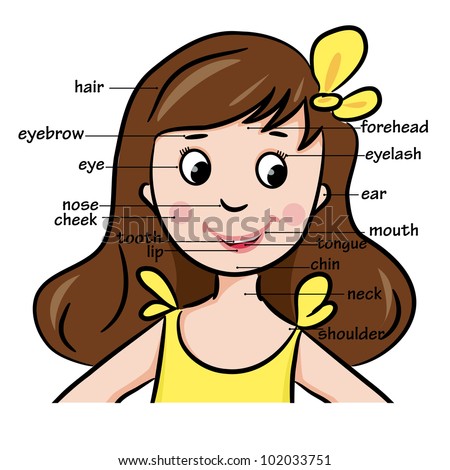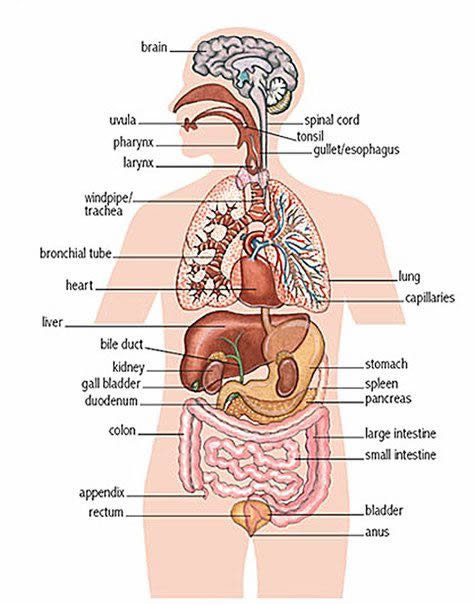PARTS OF THE BODY

The Face
Eye, nose, mouth, ear, cheek, chin, nostril, eyebrow, eyelid, eyelash, lips.
Mouth - you use your mouth to talk, to eat and to breathe.
Nose - You can smell things with your nose. You can also breathe through your nose.
Nostrils - these are the two holes in your nose.

The Arm and Hand
- finger, palm, wrist, forearm, elbow, upper arm, shoulder, thumb.
The Hand and Fingers
- hand
- thumb
- index finger
- middle finger
- ring finger
- little finger (informal: pinky finger)
- nail
- knuckle
The Leg and Foot
- knee, leg, shin, calf (muscle), ankle, heel, foot, toe
ankle - the joint between your leg and your foot.
Internal Parts of the Body
heart - your heart pumps your blood around your body.
lungs - when you breathe, the air goes into your lungs.
veins - these transport blood through your body. They are like little tubes.
brain - this is your 'thinking machine' inside your head.
throat - food goes down this to get to your stomach.
liver - the organ that cleans your blood.
stomach - your food goes here when you swallow it.
kidneys - the organs that process all your body waste.
skeleton - all of the bones in your body.
ribs - these are the bones that protect the organs in your chest.
bones - your skeleton consists of many bones. There are about 206 in your body.
skin - it covers almost the entire body and helps keep all the organs and muscles in place.

SONG OF THE BODY PARTS

HEAD, SHOULDERS, KNEES AND TOES

Comentarios
Publicar un comentario